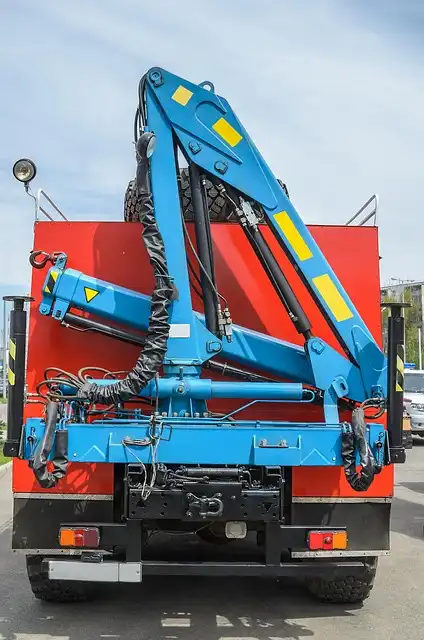Waymo’s Autonomous Vehicle Dominance in California: A Data-Driven Analysis

Waymo leads California's AV landscape with 85.2M miles driven, dominating driverless deployment. CPUC data reveals trends in rider-only miles, journey length, and revenue potential. The future includes WAVs and expanded service areas.
Waymo’s driverless deployment in the top blue box is the leading classification with over 32.3 million rider-only miles and over 61.5 million total miles. Drivered deployment has limited VMT that add to just 54,000 rider-only miles and 2.62 million total miles as Waymo just participated in 2022-23.
Waymo’s Leading Driverless Deployment
The 2nd classification is vacant miles, or the miles driven to pick up passengers after a robotaxi order is accepted. The 3rd VMT bucket is driverless miles for servicing the robotaxi, such as cleansing, charging BEVs and any kind of upkeep journeys. The CPUC also provides passenger miles, or the sum of travelers increased by the number of miles each travelled.
Waymo’s collective rider-only miles reached 32.3 million miles by the end of Q3 2025. We can likewise compute ordinary rider-only miles per journey and total miles per journey when vacant and overhead miles are included. The ordinary rider-only miles per journey was in the 2.7 miles to 3.0 miles range throughout 2023 and 2024.
The amount of Waymo’s collective CPUC and DMV VMT was virtually 85.2 million miles. Waymo’s driverless miles made up 74.3% or 63.3 million miles of complete Waymo miles. Drivered miles added 25.7% or 21.9 million miles.
Each of the VMT information sections has certain usefulness ranging from profits capacity to operational performance. Rider-only miles each month is essential information due to the fact that it is proportional to regular monthly profits potential when the typical cost per mile is understood. Current ride-hailing prices trends will certainly be useful for robotaxi mileage rate. Journey details gives added value for examining earnings possibility. The number of guest trips and overall passengers offer extra perspectives on present revenue.
Key VMT Insights
In drivered implementation, Waymo has 100% of VMT miles as no other business reported AV miles. Waymo had only 54,000 rider-only miles and 2.6 million total VMT. Waymo collected these miles in 2022 and 2023.
An overall of 12 business obtained CPUC permits to participate in one or even more of the 4 AV categories. The 5 business with legitimate authorizations are Aurora, AutoX (now Tensor), Waymo, WeRide and Zoox. Waymo has licenses for all 4 AV classifications.
CPUC Permits and Waymo’s Dominance
Waymo accounted for 55.7% of overall AV miles, or 17.8 million VMT. The other 55 companies accounted for 44.3% of overall DMV miles.
Waymo controls AV testing and release in The golden state, which is summarized in the next number. There are five bar graphes that compare Waymo’s VMT versus the sum of various other AV business.
In early 2025, the ordinary trip length started enhancing and got to 3.6 miles in August 2025. When Waymo gets authorization to drive to the San Francisco airport terminal (SFO), the typical journey length is likely to enhance.
Each box reveals the AV business name, years of CPUC fillings and VMT. Firm name and miles remain in eco-friendly for very easy comparison. Note that several firms have not proactively used their authorizations and have absolutely no miles. From this figure it is clear that Waymo is the primary individual of its CPUC authorizations and is the only firm making use of all four of its AV permits.
The California Public Utilities Compensation (CPUC) is providing several of the best information to recognize the economics and fads of AV testing and release. The majority of the information is from Waymo, and it shows how swiftly Waymo’s robotaxi solution is growing in The golden state.
The takeaway is that Waymo has actually built up 85.2 million miles in the California DMV and CPUC AV programs. This compares to 102 million collective VMT for all companies or an 83.5% share of Waymo’s VMT. All other AV firms have assembled 16.8-plus million miles or a 16.5% share of total VMT. The majority of the other business’ miles are from DMV testing and mainly with safety and security vehicle drivers onboard.
Ordinary miles per trip is an important trend as it offers better future profits viewpoints. Trip size is expected to expand as the robotaxi coverage areas enhance and airport terminals and various other key journey locations are included in service locations.
The best bar graph presents ordinary trip size when empty and overhanging VMT are consisted of. The standards were about two times as high as rider-only miles per journey, but the proportion is now around 1.8. As Waymo broadens release, the ratio will certainly decrease from operational effectiveness.
Likewise, there are driverless and drivered pilot programs for testing. Four firms have actually had driverless allows as noted in the table over, and all have filed reports with driverless miles. Twelve companies have actually had driverless pilot permits, but just 5 companies have active permits presently.
There was a decrease in June 2025 to two million-plus miles, which was because of interruption from significant objections against Trump’s immigration plan in Los Angeles and San Francisco. Numerous Waymo robotaxis were melted in Los Angeles. The VMT drop in June 2025 was 31%. This was a short-term occasion, and growth came back in July and Q3 2025.
The CPUC supplies permits in 4 AV classifications as summed up in the following table. Only Waymo and Cruise have licenses for the driverless programs, but Cruise ship’s authorizations have actually been put on hold.
Journey information supplies added insight into understanding income growth, which includes overall paid passenger trips and number of guests transported. Ordinary passengers per journey can be calculated together with waiting time per journey. Ordinary rider-only miles per journey and overall miles per trip can additionally be approximated.
The CPUC information supplies a great deal of useful details that offers point of views on exactly how the robotaxi might evolve. Nonetheless, presently this is only readily available from Waymo. None of the various other companies are in the driverless release phase where data is readily available for estimating functional trends.
Waymo’s The golden state DMV driverless miles started in 2022 and covered 1.7 million miles in 2024. Waymo DMV drivered miles started in 2015 and peaked at 16 million miles in 2024. Overall Waymo DMV AV miles were 17.8 million.
Waymo’s driverless miles accounted for 74.3% or 63.3 million miles of complete Waymo miles. In drivered implementation, Waymo has 100% of VMT miles as no various other firm reported AV miles.
Rider-Only Miles Growth and Revenue Potential
Rider-only miles were much less than 50% of total miles with 2024 and expanded to over 56% in Q3 2025. Empty miles have been in the 12-15% range in 2025. Overhead miles have actually been over 35% of total miles through Q1 2025 but dropped listed below 29% in Q3 2025.
The following four numbers have month-to-month and annual details on essential information drawn out from evaluating Waymo’s quarterly filing with the CPUC. The evaluation is concentrated on Waymo’s driverless deployment information. This details is just for California and excludes Waymo’s tasks in Phoenix metro, Austin and other cities.
The next figure is a recap of which firms have filled AV task records with the CPUC from 2018 with September 2025. The 4 AV permit groups are color-coded: Drivered pilot in red boxes, driverless pilot in green boxes, drivered release in black boxes and driverless deployment in blue boxes.
The first figure shows the VMT information by year for Waymo in six classifications– 4 CPUC AV sections described in the post over and two AV segments from California DMV. There are three drivered (with safety and security motorist) AV groups that are displayed in eco-friendly blocks. There are also three driverless AV groups, which make use of blue boxes. In both situations, there are 2 AV categories from the CPUC and one from the DMV.
The next number reveals monthly traveler journeys and number of travelers from August 2023 to September 2025. Month-to-month trips are revealed on the left bar chart and grow from 13,000 in August 2023 to over one million in September 2025. The month-to-month number of travelers jumps from 20,000 to 1.37 million in the same time period.
The next table summarizes the value of CPUC information and what we can learn from the data trends. The monthly CPUC details gives information for examining and estimating robotaxi company fads. Though for The golden state, this details ought to be useful in other places.
Two figures summarize the self-governing VMT from CPUC and consist of the AV testing VMT from California DMV, which began in 20215 and undergoes 2024. The California DMV will certainly have another year of data in January 2026.
Future Trends: WAVs and Accessibility
The very first batch of driverless information became available in August 2023, with the latest information ending in June 2025. Lorry miles traveled (VMT) data and journey information are the most vital details available. Additional data can be calculated as shown below in the table.
Wheelchair obtainable vehicles (WAVs) are hardly ever used but will certainly come to be a vital future trend. Robotaxis can boost mobility services for disadvantaged people however usually need WAVs to take care of wheelchairs. WAV-based robotaxis are likely to be available in 2026.
VSI provides a website on ADAS-AV technology, business and item ecological communities. VSI offers used research via several lorries with lidars, radars, electronic cameras and software program for testing, information procurement and demos. At IHS Markit, he concentrated on AVs and MaaS.
The CPUC supplies other information that is not included in this short article. One is overall monthly wait time in hours. From this, we can calculate the average delay time per journey, which is about 21 mins in 2025, below 49 minutes in 2023 and 31 in 2024.
We can additionally determine typical rider-only miles per trip and complete miles per trip when vacant and above miles are included. The ordinary rider-only miles per journey was in the 2.7 miles to 3.0 miles range throughout 2023 and 2024.
In the CPUC drivered pilot segment, Waymo has actually accumulated 3.35 million and nearly 97% of all VMT. In the CPUC driverless pilot category, it is a little bit more even as Waymo represent 77.2% and three other firms have a 22.8% share.
Waymo’s rider-only miles share has actually boosted progressively from 45.6% in 2023 to over 56% in Q3 2025. Waymo’s collective rider-only miles got to 32.3 million miles by the end of Q3 2025. Presuming approximately $8 per mile, Waymo’s California collective revenue would certainly be over $258 million.
Both guests and journeys dropped in June 2025 as a result of the Trump presentations in Los Angeles and the Bay area. The June decrease was 33% for journeys and 34% for guests. From the above data, we can determine the average variety of guests per journey. For 2025, it was an average of 1.43 passengers per journey and 1.49 in 2024.
The CPUC collects in-depth AV information from all business that are on a course to deploy robotaxis and similar services. The AV data is composed of monthly info that is collected quarterly, is due one month after a quarter finishes and is openly launched in the adhering to month.
1 autonomous vehicles2 California
3 CPUC
4 robotaxi
5 VMT
6 Waymo
« Google Gemini 3: AI-Powered Search & Enterprise ImpactThunderbolt 4 vs USB4 Docks: Black Friday Deals & Buying Guide »
